#arapaima
Text
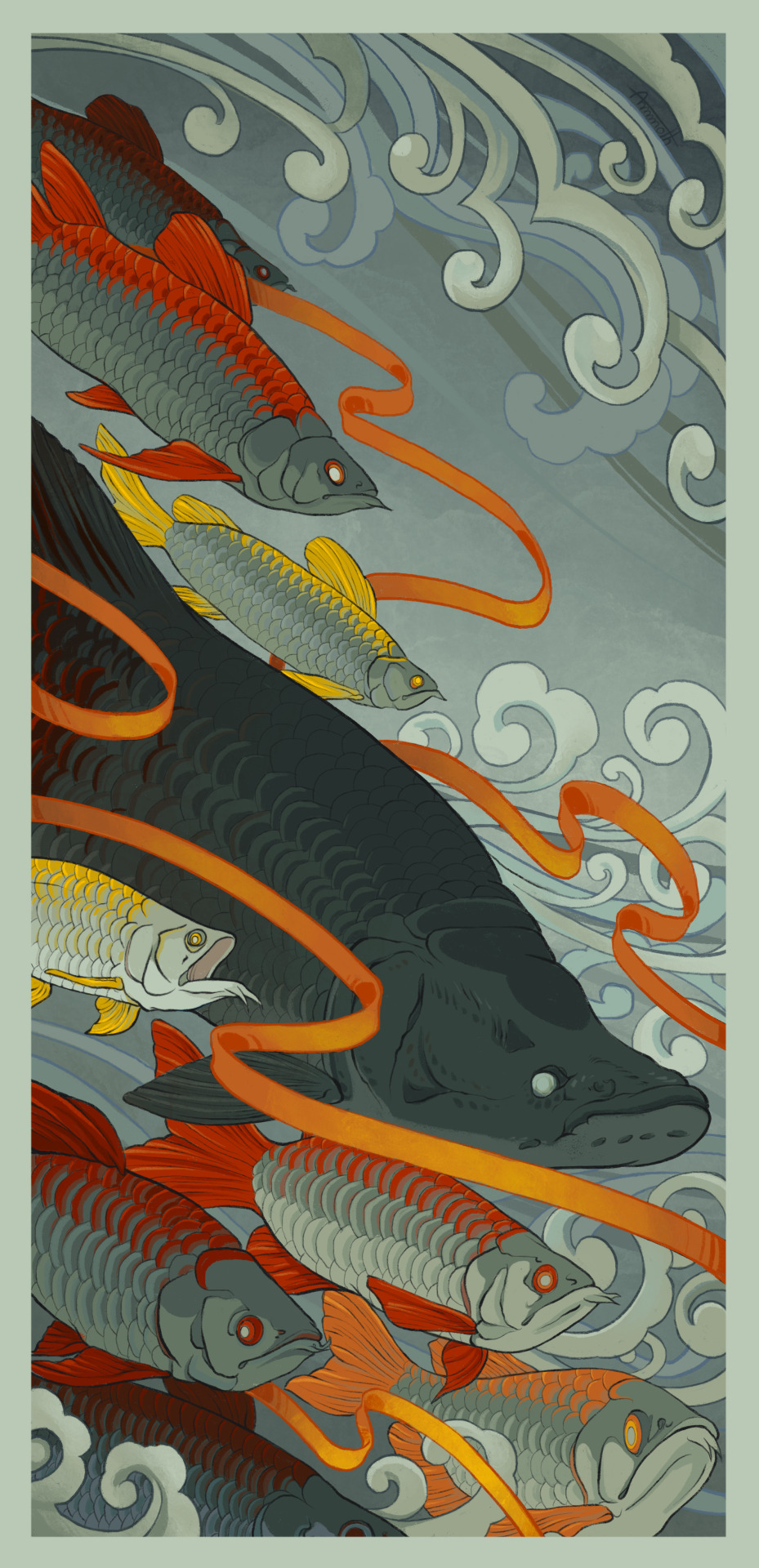
Made a wallpaper for my new phone~
#art#fish#moth draws#arowana#arapaima#illustration#wallpaper#this came out exactly how i wanted it to hell yeah#great feeling
8K notes
·
View notes
Photo

School passing through
#arapaima#rainbow trout#trout#coelacanth#art#drawing#illustration#digital art#fish#marine life#marine creatures#my art#my artwork#drpumpkins#drpumpkins art
9K notes
·
View notes
Text
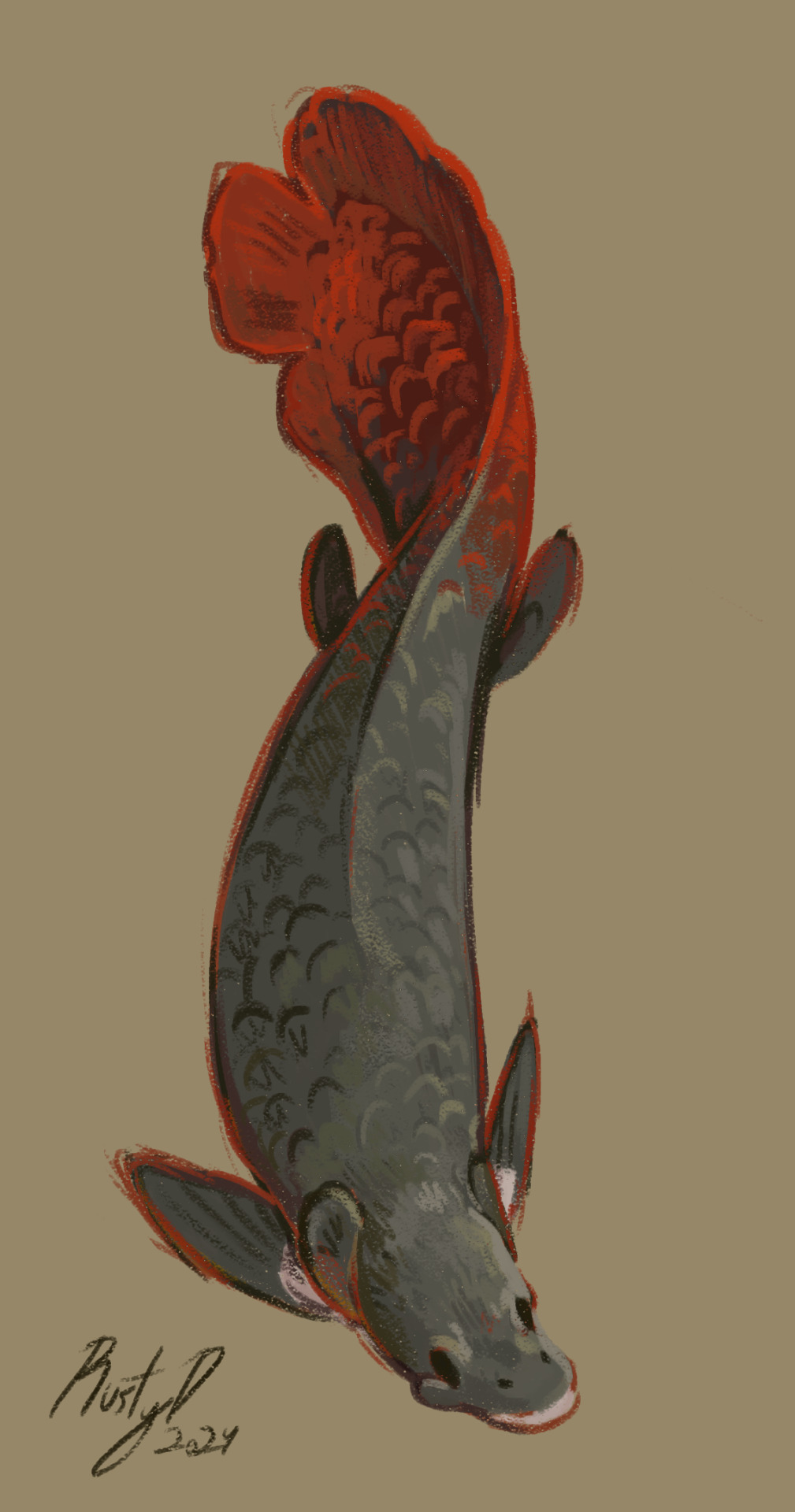
arapaimaaaaaaaaaaa
1K notes
·
View notes
Text

Arapaima Dragon
742 notes
·
View notes
Text
It's big, it's strong, its scaly, it's this week's Wet Beast Wednesday topic! An arapaima, also known as a pirarucu or paiche, is any of four species of fish in the genus Arapaima in the order of bony-tongued fish. There is som ongoing debate about the classification of the species, so to keep thing simple, I'm going to use the most common species names of Arapaima gigas (the type species and most well known, and the one with the most confusion about its classification), Arapaima agassizii, Arapaima leptosoma, and Arapaima mapae. Because A. gigas is the most well-studied of the species, unless I say otherwise you can assume everything I say in this post applies to it.

(image: an arapaima)
Arapaimas are bony fish that retain several primitive traits, causing them to sometimes be identified as "living fossils". They are most notable for their size, with A. gigas being a contender for the largest freshwater fish in the world. The maximum recorded size for one was 3.7 meters (10 ft) and 200 kg (400 lbs), but most get to around 2 meters (6.6 ft) long and 200 kg (440 lbs). That average length is decreasing as overfishing of the largest individuals is resulting in a selective pressure for smaller sizes. In addition to their size, they are extremely strong and can move fast if needed. Arapaima are fully capable of leaping out of the water if disturbed or they feel their current pond in unsuitable. Because of their strength, specimens in captivity must be handled with care as they can easy break bones if they slap someone. They live in rivers and lakes in South America, where they are often the top predators.
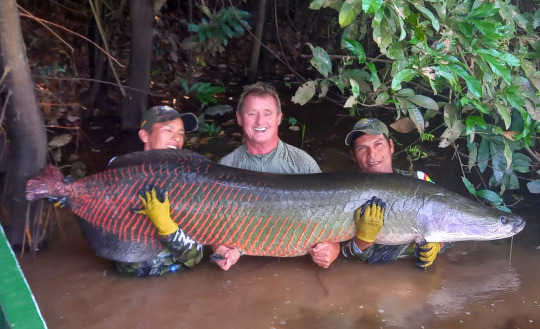
(image: several anglers with an arapaima)
Arapaimas are obligate air-breathers and will drown if they can't get to the surface to breathe. This is accomplished with a specialized swim bladder. The swim bladder is filled with highly vascularized tissue, letting it act like a lung. This pseudo-lung opens into the mouth using a modified gill arch known as the labyrinth organ. Arapaima gills are too small to sustain them, but they can supplement their oxygen intake with the gills. Juveniles are born exclusively using their gills and transition into air-breathers shortly after hatching. Arapaimas can survive up to a full day out of the water. They typically surface to gulp in air every 15-20 minutes. Breathing makes a loud gulping sound that anglers use to target them.
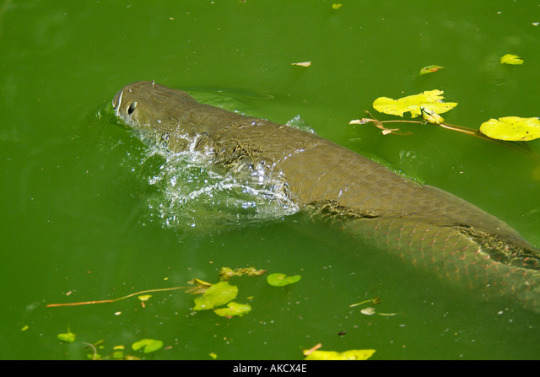
(image: an arapaima at the surface)
Because of their ability to breathe air, arapaimas are top predators in low-oxygen environments. Non-air breathing fish are forced to slow down in water with low levels of dissolved oxygen as they can't get enough oxygen through their gills. Since Arapaimas breathe air, they can easily chase down lethargic smaller fish. They are especially potent predators during the low season, when water levels lower. A combination of rotting vegetation reducing oxygen levels and ponds getting cut off from rivers and losing a supply of oxygen lets the arapaima reign supreme. Arapaimas are primarily predators that feed on smaller fish, though they will hunt other types of animals and eat fruits and seeds. Even land animals aren't safe as arapaimas have been known to launch themselves out of the water to catch animals near the shore. A combination of sharp teeth and their bony tongues are used to debilitate prey.
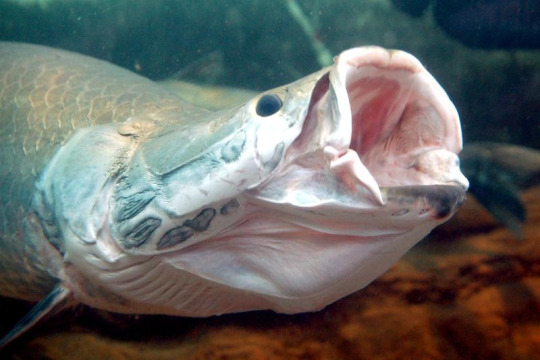
(image: an arapaima with its mouth open)
Not content with powerleveling their attack stat, arapaimas also have excellent defense. Their scales have been compared to bullet proof vests. Each has a hard, mineralized outer layer over multiple layers of collagen fibers. These layers are all oriented at an angle to each other to provide extra strength. This orientation of layers is called a Bouligand-type arrangement and is similar to how plywood is assembled. The harder outer layers and flexible inner layers work together to allow for both strength and flexibility. These scales help provide protection form large predators such as caiman and small threats like biting piranha. They also like provide protection from other arapaima, as the fish are aggressive and will fight each other.

(image: a diagram showing the composition of arapaima scales. source)
You probably wouldn't expect a swimming tank of an animal to be a good parent, but you'd be wrong. Arapaimas work together in mated pairs to build nests for their eggs, then cooperate to guard the nest. Once the eggs hatch, the male will practice mouth brooding, keeping his young safe in his mouth. The female will also help by patrolling the area around the male to ward off predators. They secrete pheromones from their heads to ensure the young don't swim too far away. Eggs are laid either in in the low season or as water levels are starting to rise, ensuring that the young become independent during the high season.
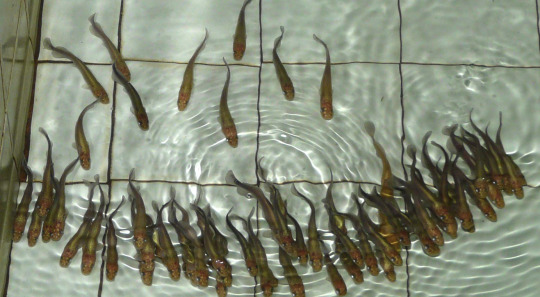
(Image: baby arapaimas)
Arapaima are classified as "data deficient" by the IUCN. This means there isn't enough data to properly assess their conservation needs. They are known to be threatened by overfishing. Arapaima make up a large part of the diet of many South American populations. Habitat loss and pollution are also believed to threaten them. They have been introduced to many areas out of their native range and are an invasive species in placed like Florida, Malaysia, and India.
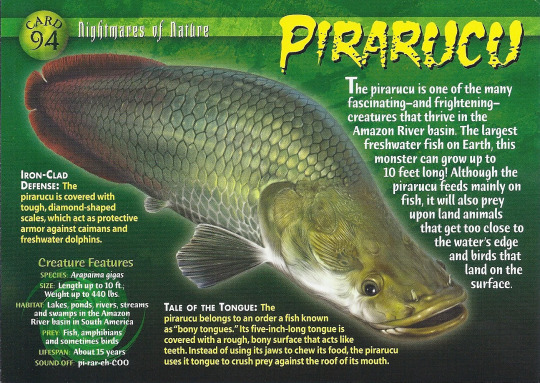
Does anyone else remember these cards? (image: the arapaima card from Weird n' Wild Creatures)
#wet beast wednesday#fishblr#fish#biology#zoology#ecology#animals#aquatic biology#animal facts#absolute unit#arapaima#pirarucu#paiche
1K notes
·
View notes
Link
“When the Brazilian state of Amazonas put the responsibility of protecting one of the world’s largest freshwater fish in the hands of the indigenous inhabitants, it saved the beast from an inevitable extinction.
The giant arapaima, a piranha-proof river monster capable of growing to 10-feet in length and weighing 440 pounds, was almost wiped out by illegal fishing in the 1990s, but two decades of conservation means the ‘Terminator of the River’ is back...
Regardless of their danger, they are also known by the name ‘Cod of the Amazon’, and disregarding a ban on arapaima fishing, their numbers have been plummeting due to the demand for the firm white meat with few bones.
The arapaima disappeared from much of its historic range, and at the dawn of the new millennium, fewer than 3,000 were estimated to exist.
Taking a different model to most conservation methods in the Amazon, João Campos-Silva, an ecologist at the Institutio Juruá, decided to work with local communities to preserve arapaima fishing, and to help people realize the kind of money they could make by protecting the environment.
“Conservation should mean a better life for locals,” Campos-Silva told CNN. “So in this case conservation started to make sense. Now local people say ‘we need to protect the environment, we need to protect nature, because more biodiversity means a better life...'”
According to Campos-Silva, there are now 330,000 arapaima living in 1,358 lakes in 35 managed areas, with over 400 communities involved in managing them. The income generated from fishing rights is pouring into those communities, who are using it to fund medical infrastructure, schools, and more.” -via Good News Network, 10/26/21
#amazon#brazil#indigenous#indigenous people#land rights#fishing#commercial fishing#arapaima#conservation#good news#hope
5K notes
·
View notes
Text

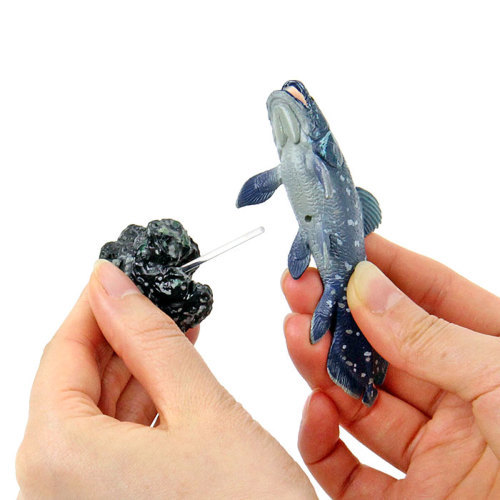

Three-dimensional fossil fish models by Colorata
#coelacanth#coelacanth model#coelacanth toys#coelacanth models#sturgeon#lungfish#arapaima#arowana#alligator gar#polypterus#coelacanths by colorata
323 notes
·
View notes
Text
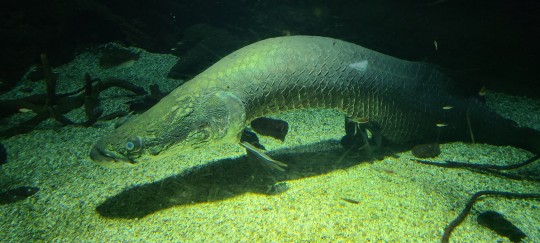
big. strong. handsome.
1K notes
·
View notes
Text

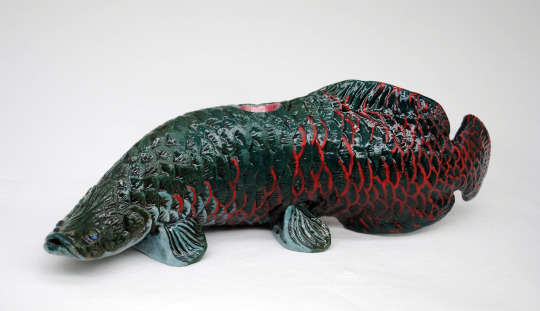


arapaima pipe
cone 6 white stoneware, underglaze, glaze
#THE CHUNKY BOY#NFS this was a custom comm from earlier this yr!#ceramics#clay#sculpture#animal art#finished work#fish#420#arapaima
230 notes
·
View notes
Text
Daily fish fact #528
Arapaima!
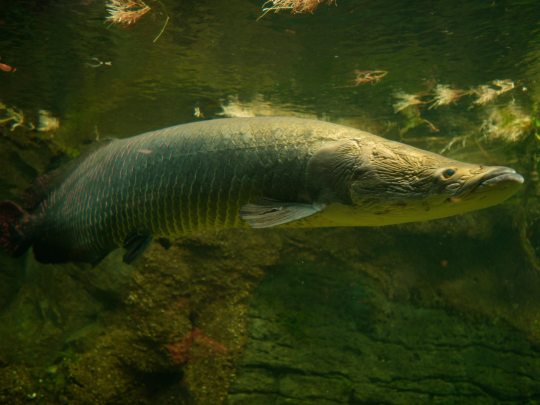
They have bony tongues, which they can use to easily crush prey against the serrated roof of their mouths!
315 notes
·
View notes
Text
Binging My Dress Up Darling/Sono Bisque Doll and then I saw this panel:

The Biologist in me sat up and screamed "That's a Fucking Arapaima!"

4 years for a degree wasn't wasted!
#sono bisque doll wa koi wo suru#my dress up darling#biology#fish#fishblr#i saw that silhouette and I JUST KNEW#arapaima
129 notes
·
View notes
Text

my weird son.
arapaima.
oil on paper - 04/05/2024 - my ko-fi
#art#painting#Fishblr#freshwater fish#fish art#oil painting#arapaima#fish#fishes#art blog#artists on tumblr
68 notes
·
View notes
Photo




Arapaima Plushie
708 notes
·
View notes
Text




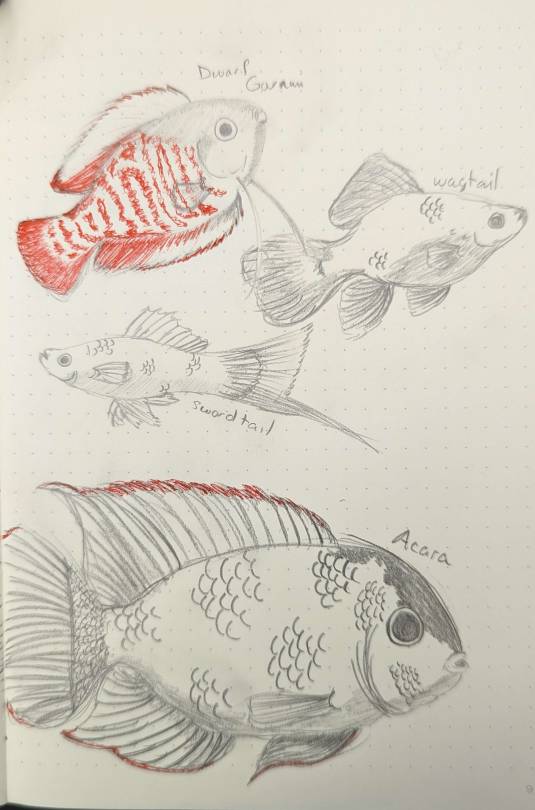
A bunch of fish sketches from back in October!
I think I like the goldfish, sturgeon, and chili rasboras best
#ajitated art#original art#aj sketches#sketches#traditional art#pencil sketches#fish#fish sketches#october 2023#...should i tag all the fish...?#arowana#arapaima#goldfish#neon tetra#medaka#axolotl#shrimp#whiptail catfish#sturgeon#minnows#chili rasbora#gourami#swordtail#acara#wagtail
111 notes
·
View notes
Note
Arapaima :D
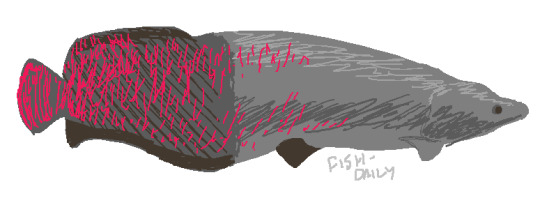
fish 58 - arapaima
199 notes
·
View notes
Note
arapaima for the fish?

71 notes
·
View notes